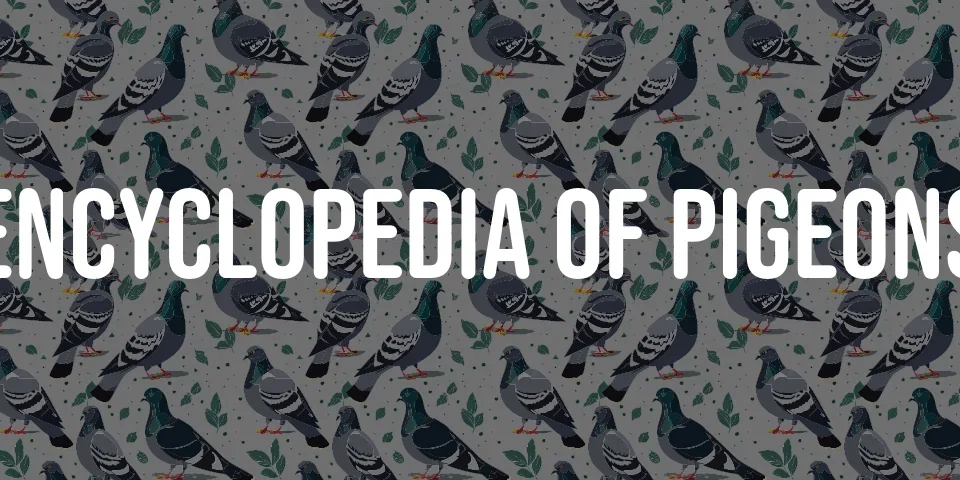Indian Gola Pigeon: An Overview
Somewhere between the dusty fields of Uttar Pradesh and the bustling rooftops of Delhi, the Indian Gola pigeon has woven itself into the fabric of daily life for centuries. It’s not just a bird; it’s living folklore, a feathered testament to patience and memory. You’ll find records dating back as far as 1590, but if you ask any old-timer lounging on a charpoy, he’ll insist these pigeons have been circling home since time immemorial.
Once mere wild field dwellers, these birds became the farmer’s quiet partners. By day, they’d forage and scavenge—gleaning what harvesters left behind—and by dusk, they’d return almost like clockwork to their waiting roosts. Nowadays, they’re a mainstay across Indian villages. But outside India? Good luck catching a glimpse—these birds remain fiercely loyal to their homeland, much like a favorite, well-worn kurta that never quite fits anyone else.
What is the Indian Gola Pigeon?
Imagine a feathered compass with a built-in GPS long before satellites filled the skies. That’s the Indian Gola pigeon for you. It’s a domesticated breed, yes, but it makes you question what “wild” really means—because their homing instinct is nothing short of legendary. Their ancestors were wild field pigeons; centuries of partnership with humans honed their knack for finding their way back to the same crumb-scattered perch, time and again.
Farmers first noticed their peculiar habits: relentless foraging (grains, seeds—whatever the land surrendered) and, most importantly, that unwavering return each night. Today, you’ll spot them dotting the rooftops of Agra or pecking at grains in Varanasi, but rarely—almost never—outside the sweep of the Indian plains.
Origins and Development in India
Long before the Gola pigeon appeared in pigeon-keeping manuals or agricultural handbooks, it was the bird of sweaty-browed laborers and tireless farmers. The story begins around 1590, but, like most things Indian, the true beginning is probably lost to oral tradition and the smoke of a thousand cooking fires.
Picture a wild bird swept up in the drama of rural life, slowly tamed by the promise of easy grain and a safe roost. Over time, those who stayed, those who returned, became the foundation of a breed as reliable as the monsoons (well, in the good years). The Gola’s greatest gift? A loyalty to home that made it indispensable to those who depended on the rhythm of the earth.
- first domesticated in the late 16th century (give or take a few decades),
- valued for relentless foraging and a stomach that could turn waste into sustenance,
- homing skills so sharp, they became part of the family, not just livestock.
It’s trust, really, that built the bond—a trust that still shapes rural Indian life.
Commonality in Native Areas
In central and northern India, the Gola pigeon isn’t just another bird—it’s practically a neighbor. With an uncanny knack for adapting to whatever patch of sky or scrap of land it’s given, this bird slots itself seamlessly into village life. You’ll spot them dodging motorbikes in Lucknow or perched on ancient temple walls, as much a part of the scene as the chai sellers or the whiff of wet earth after rain.
They’re more than just agricultural assistants—they’re woven into rituals, festivals, and childhood memories. Their fame rarely travels beyond India’s borders, which is perhaps why they remain so stubbornly, beautifully, Indian.
Characteristics and Appearance of Indian Gola Pigeon
If you’ve ever held an Indian Gola pigeon, you’ll notice its compact build—about 400 grams, though it feels denser, almost as if it’s storing up stories along with seeds. Their eyes—usually a bold, almost theatrical red—seem to hold a secret or two. Thanks to a long history of selective breeding (imagine pigeon fanciers poring over color charts under a mango tree), their plumage runs the gamut from plain to downright flamboyant.
Their robust, muscular bodies aren’t just for show—they’re built for sudden flight and sustained journeys. And while some pigeons fade into the cityscape, the Gola is a master of adaptation, dressed in a variety of coats that tell the tale of its resilience.
Physical Traits and Size
Not a heavyweight, but don’t let that fool you—the Indian Gola is all grit and muscle packed into a petite frame. Weighing in around 400 grams when grown, it’s a bundle of energy. Those unmistakable red eyes can make you feel as if you’re being sized up by a small, feathered philosopher.
Their colors? Think patchwork quilt: some flaunt a uniform coat, others sport wild patterns, yet all are bred for function as much as flair. Agility is the name of the game, and with a body like this, it’s no surprise they can dart, swoop, and soar with the best of them.
Distinctive Coloring Patterns
No two Gola pigeons look quite alike—each one seems painted by an artist in a particularly playful mood. From subtle grays to creams with unexpected splashes of bronze or chestnut, their feathers are a living mosaic. Some bear intricate marbling, others bold, singular patches.
It’s the result of generations of careful selection, where breeders sought not just utility, but beauty—a sort of feathery expressionism that only grows more dazzling under the Indian sun.
Habitat and Environment
Drop a Gola pigeon in the middle of a bustling city or on the edge of a sleepy village, and watch it thrive. This bird doesn’t see obstacles—only opportunities. In rural India, they’re the unofficial clean-up crew, making short work of leftover grain and seeds. In the city, they become rooftop acrobats and alleyway foragers, unbothered by the swirl of humanity below.
- countryside: their preferred buffet—fields, barns, open granaries,
- cities: ledges, roofs, abandoned windowsills become their high-rise apartments,
- diet: whatever’s scattered, forgotten, or tossed aside.
Their ability to make a home anywhere is almost enviable—if only we humans could adapt with such grace.
Farmstead and Urban Environments
There’s a kind of poetry in watching Indian Gola pigeons move from paddy field to city block. Out on the farm, they’re the unsung heroes, cleaning up after the harvest and, in the process, helping to scatter seeds for the next season—a sort of accidental partnership with the land.
Shift the scene to a city, and they don’t miss a beat. Rooftops, rain gutters, even signboards become nests and lookout posts. Their diet switches from grains to whatever scraps urban life throws their way. Remarkable, really—how they turn both chaos and order into home.
Climate Tolerance and Space Requirements
If pigeons were to write a survival manual, the Gola would pen the chapter on adaptability. Scorching summers, nippy winters—they take it all in stride. Their secret? An untiring spirit and an insistence on space—lots of it.
- restless by nature, so cramped cages are a nonstarter,
- space to fly, space to perch, space to just be—a recipe for both physical and mental health,
- give them room, and they’ll reward you with vigor and long, looping flights.
Their resilience isn’t just legend—it’s a lived reality, visible in every flutter and swoop.
Diet and Feeding Habits
At the heart of a Gola pigeon’s day: food. Their menu leans heavily on grains and seeds, the humble currency of the field. From sunrise to sunset, they’re busy—nibbling here, pecking there, sometimes trading a glance with a farmer who knows just how much these birds help keep the land tidy.
A steady diet of grains keeps their wings strong and their minds sharp. Occasionally, a lucky pigeon might find a stray berry or a discarded chapati—but it’s the simple things that keep them flying.
Granivorous Diet: Grains and Seeds
Think of a Gola pigeon as a little grain engine—constantly searching, consuming, and converting seeds into the energy that fuels those marathon flights. Their daily routine is a masterclass in persistence:
- scavenging spilled rice or millet along field paths,
- snapping up wild seeds in the underbrush,
- never far from the next meal, always keeping an eye out for something edible.
This relentless focus on grains isn’t just habit—it’s evolutionary perfection, ensuring every flight is powered by pure, homegrown fuel.
Flying Abilities and Homing Instinct
If you’ve ever seen a Gola pigeon take off, you know it’s like watching a story unfold in the air. These birds are not only fast—hitting 65 to 70 mph when the mood strikes—but they’re also indefatigable. Some have been known to keep going, wings beating like little metronomes, for up to 11 hours straight. Imagine the stamina of a marathon runner, but with feathers.
Yet speed and endurance are only half the story. The real magic lies in their homing instinct. Spin them around, drive them out of town, or even (not recommended) blindfold them, and they’ll still find their way back to the old loft. Start raising them young—ten, twelve days old—and you’ve got a feathered friend for life, one who knows where it belongs no matter how far it flies.
- speed,
- endurance,
- loyalty to home that borders on the mystical.
It’s little wonder these birds have been trusted messengers and companions for generations.
Speed and Endurance
There’s a reason pigeon fanciers get misty-eyed talking about the Gola’s flight: it’s a display of raw power and unyielding will. Watch one soar, and you’ll understand why they’re not just admired but revered. Their ability to keep going, mile after mile, without so much as a pit stop is the stuff of legend.
Training them for racing is tricky—mature birds don’t take kindly to new routines—but their athleticism is undeniable. Even fanciers who never race still marvel at their stamina during daily flights.
Homing Instinct and Flying Range
The Gola’s inner compass is more reliable than any GPS app. By the time a chick is barely out of the nest—just 10 to 12 days old—it’s already imprinting on its home base. Let it fly, and it’ll come back, no matter the distance, threading its way through bustling towns, fields, and forests.
Pigeon enthusiasts prize this trait, organizing casual flights not for competition, but for the sheer joy of watching these birds return, again and again, as if pulled by an invisible string.
Breeding and Reproduction
Romance among Gola pigeons is practical, not dramatic. Pairs cooperate—raising clutch after clutch, usually two eggs at a time, both parents sharing the load. It’s a partnership built on necessity rather than sentiment.
Breeders, meanwhile, are always tinkering—hoping for bigger, faster, stronger offspring. Sometimes that means crossing Golas with larger breeds. It’s a balancing act: keep the bloodlines pure, but don’t ignore the promise of a more robust bird. Genetics is a tricky dance, but one that keeps the stock healthy—and the future bright.
Breeding Traits and Selection
Selective breeding among Golas is as much art as science. The best breeders look for more than pretty feathers—they want agility, stamina, and a homing instinct that doesn’t fade with time. Each pairing is a gamble, a hope that the next generation will be a little sharper, a little hardier.
Genetic diversity is the secret weapon—too much inbreeding, and you risk fragile, sickly birds. The best fanciers know when to mix it up and when to double down on a particularly promising trait.
Crossbreeding and Genetic Factors
Some breeders are tempted by size or flash, bringing in outside bloodlines. But the heart of the Gola is its unique homing sense and flight ability. Responsible breeders always keep at least one eye on these core qualities, even when experimenting.
- crossbreeding can boost size or productivity,
- but the true Gola spirit is in that uncanny sense of home—lose that, and you lose the essence.
Uses and Economic Importance
The Gola pigeon isn’t just a pretty face; it’s long been a workhorse of small-scale agriculture. In the world of squabbing (not exactly a dinner-table topic in the West, but a mainstay in many Indian kitchens), these birds are prized for their tender, protein-rich meat. Quick to mature and easy to care for, they’re a cost-effective way to put food on the table.
- compact, fast-growing, lots of meat for the size,
- their adaptability and low maintenance make them a farmer’s friend,
- the value goes beyond the plate: they’re also beloved companions and, for some, feathered status symbols.
Role in Squabbing Industry
If you’ve never tasted squab, picture a dish that’s both delicate and hearty—a contradiction, much like the Gola itself. These pigeons are bred for the table as much as the sky, providing farmers with a steady, reliable source of meat. The economics are simple: easy to raise, quick to mature, low on input but high on return.
- keeps farming operations diverse and resilient,
- supports local traditions and cuisine,
- helps maintain a living link between past and present.
Value as Pets and Racing Pigeons
Not everyone raises Golas for food—many keep them as feathered companions. Their gentle temperament makes them ideal pets, especially for those with a soft spot for birds. They don’t ask for much—some seed, a clean perch, and a bit of attention.
As racing birds, their skills are legendary, though less often tested in formal competition than in informal displays of loyalty and athleticism. For hobbyists, there’s joy simply in letting the birds fly and watching them return, a ritual that never loses its magic.
- recreational flying,
- showing off their beauty and skill,
- quiet companionship on lazy afternoons.
Care and Management of Indian Gola Pigeons
Caring for a Gola pigeon isn’t rocket science, but it does demand consistency and a dose of affection. Space is essential—a cramped loft is a recipe for sullen, listless birds. Fresh air, sunlight, and the opportunity to stretch their wings make all the difference.
Hygiene is non-negotiable: a dirty loft is an invitation to illness and pestilence. Grain and seeds form the bulk of their diet, but the occasional treat—a sliver of fruit, a stray vegetable—keeps them spry. Regular routines, from feeding to cleaning, build both trust and health.
Extreme temperatures can be rough—shade in summer, shelter in winter, and always, always clean water. And don’t forget, these are social birds: a little conversation (even if one-sided) keeps them engaged and alert.
- space,
- cleanliness,
- good food,
- protection from the elements,
- company—yours, and each other’s.
Loft Requirements and Maintenance
A Gola’s ideal loft is less palace, more cozy cottage: roomy enough for a proper stretch, yet snug against the worst weather. Good airflow is crucial—stale air breeds more than boredom.
Daily chores aren’t glamorous, but they’re essential: sweep out droppings, replace leftovers, swap in fresh water. The reward? Birds that are not just healthy, but radiant in both feather and flight.
- keep it clean, keep it dry, and don’t skimp on elbow room,
- a healthy loft is the foundation for everything else.
Training and Flying Tips
Start them young, and you’ll have a loyal flyer for years. The window—10 to 12 days old—isn’t just tradition, it’s biology. Hand-feeding builds trust; short flights close to home lay the groundwork for longer journeys.
Patience and positive reinforcement are your best tools. A little treat for a job well done—a favorite seed, a gentle pat—makes all the difference. As confidence grows, so does stamina, until one day, you realize your bird has become a master of the sky.
- regular interaction cements the bond,
- gradual, rewarding challenges hone their skills.
If you listen closely, you might even find yourself learning a thing or two about loyalty, persistence, and the simple joy of coming home.






